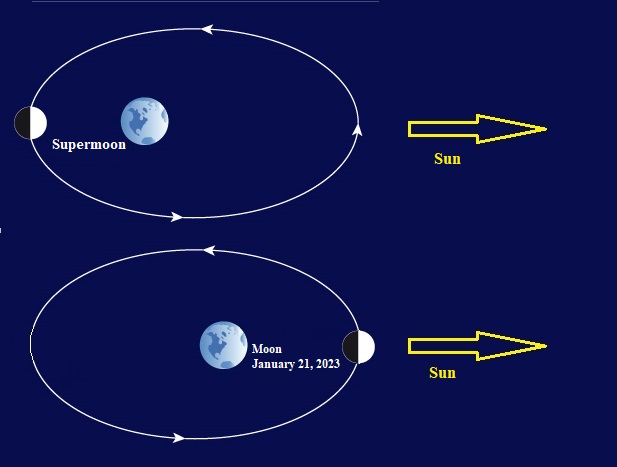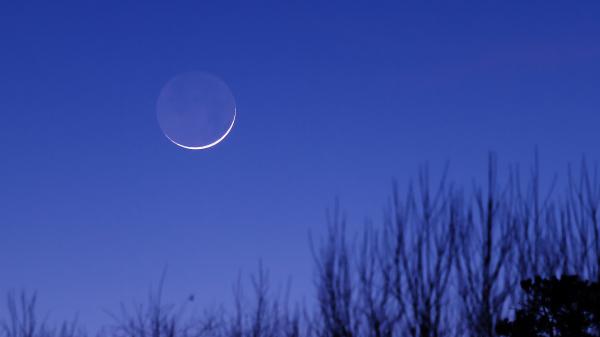The Moon moves around the Earth in an elliptical orbit, moving away from it as much as possible at apogee and approaching at perigee. But this orbit is constantly changing under the influence of the gravity of the Sun and planets. Therefore, every year we can highlight a certain moment when our natural moon will come closest to us. In 2023, this will happen on January 21.
The closest approach of the Earth and the Moon is expected at 10 hours 58 minutes, GMT+2. At this moment, the distance between their centers will be 356,568 km. If this event had occurred during the full moon phase, all the media would already be shouting about a “supermoon“. But this time we are dealing with the opposite situation: three minutes earlier, our natural moon will enter the new moon phase, that is, it will be in the sky closest to the Sun.

If this phase had occurred near the node of the lunar orbit (the intersection point of its imaginary projection on the celestial sphere with the ecliptic), a solar eclipse would be observed on Earth. Unfortunately, this year it did not happen that way: on January 21, the Moon would pass through the sky about 5° south of the Sun, and it would be impossible to see it at the moment of its closest approach to the luminary. It would be much more convenient if it was in the full moon phase — that’s why such events attract much more media attention.
In fact, the gravity of the Sun affects the movement of our natural moon even more than the gravity of the Earth, so its passage through the perigee quite often almost coincides with the phase of the full moon or new moon. Of course, the most interesting thing happens if such coincidences are accompanied by a solar or lunar eclipse — then we can expect, for example, a full phase of extremely long duration.
We should also not forget that the Moon, being at perihelion, causes the strongest tides in the earth’s oceans (and not only in the oceans — tidal disturbances are also “felt” by the atmosphere and the earth’s crust). When it appears not far from the straight line passing through the centers of the Earth and the Sun, the lunar tides overlap with the solar ones and mutually amplify. Therefore, navigators have been monitoring the movement and mutual location of these celestial bodies for a long time.

Interestingly, during the new moon phase, our natural moon was last so close to Earth more than 992 years ago — on December 3, 1030, when the distance to it was 356,562 km. The next time such a close approach in this phase is expected on January 20, 2368. Then the Moon will be separated from us by 356,560 km.
Follow us on Twitter to get the most interesting space news in time
https://twitter.com/ust_magazine
